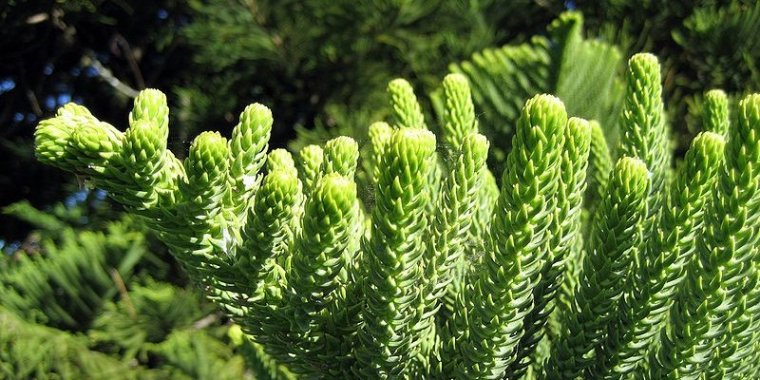| News / Science News |
New Argentine fossils uncover history of celebrated conifer group
Newly unearthed, well-preserved conifer fossils from Patagonia, Argentina, show that an endangered and celebrated group of tropical West Pacific trees has roots in the ancient supercontinent that once comprised Australia, Antarctica and South America, according to an international team of researchers.

Araucaria heterophylla (Norfolk Island Araucaria) foliage from a mature tree in Auckland, New Zealand. ![]()
"The Araucaria genus, which includes the well-known Norfolk Island pine, is unique because it's so abundant in the fossil record, and is still living today," said scientist Gabriella Rossetto-Harris of Penn State University and lead author of the study. "Though it can grow up to 180 feet tall, the Norfolk Island pine is also a popular houseplant you might recognize in a dentist's office or a restaurant."
Norfolk Island is a tiny Australian island in the South Pacific Ocean.
Araucaria grew around the world starting about 170 million years ago in the Jurassic period. Around the time of the dinosaur extinction 66 million years ago, the conifer became restricted to certain parts of the Southern Hemisphere.
Today, four major groups of Araucaria exist. The timing of when and where these living lineages evolved is still being debated, Rossetto-Harris said. One grows in South America, and the other three are spread across New Caledonia, New Guinea and Australia, including Norfolk Island. Many are now endangered or vulnerable species.
The Norfolk pine group, the most diverse with 16 species, is usually thought to have evolved near its modern range in the West Pacific well after the Gondwanan supercontinent split up about 50 million years ago.
They analyzed the fossils' characteristics and compared them to modern species to determine what living group the fossils belonged in. Then they developed a phylogenetic tree to show the relationships between the fossils and living species.
"These results run counter to examples where molecular dating methods suggest an older age of origin than that suggested by the fossil record," said Christopher Schneider, a program director in NSF's Division of Environmental Biology.
"In the case of Araucaria, the new fossils from South America suggest a much older time of origin for the Australasian group of Araucaria, and that the group was widespread across the Gondwanan supercontinent prior to its breakup. That changes the biogeographic picture for the Araucaria, an iconic Gondwanan relict taxon." (National Science Foundation)
YOU MAY ALSO LIKE





